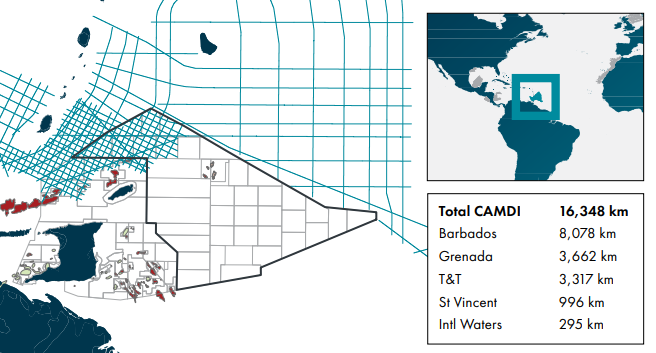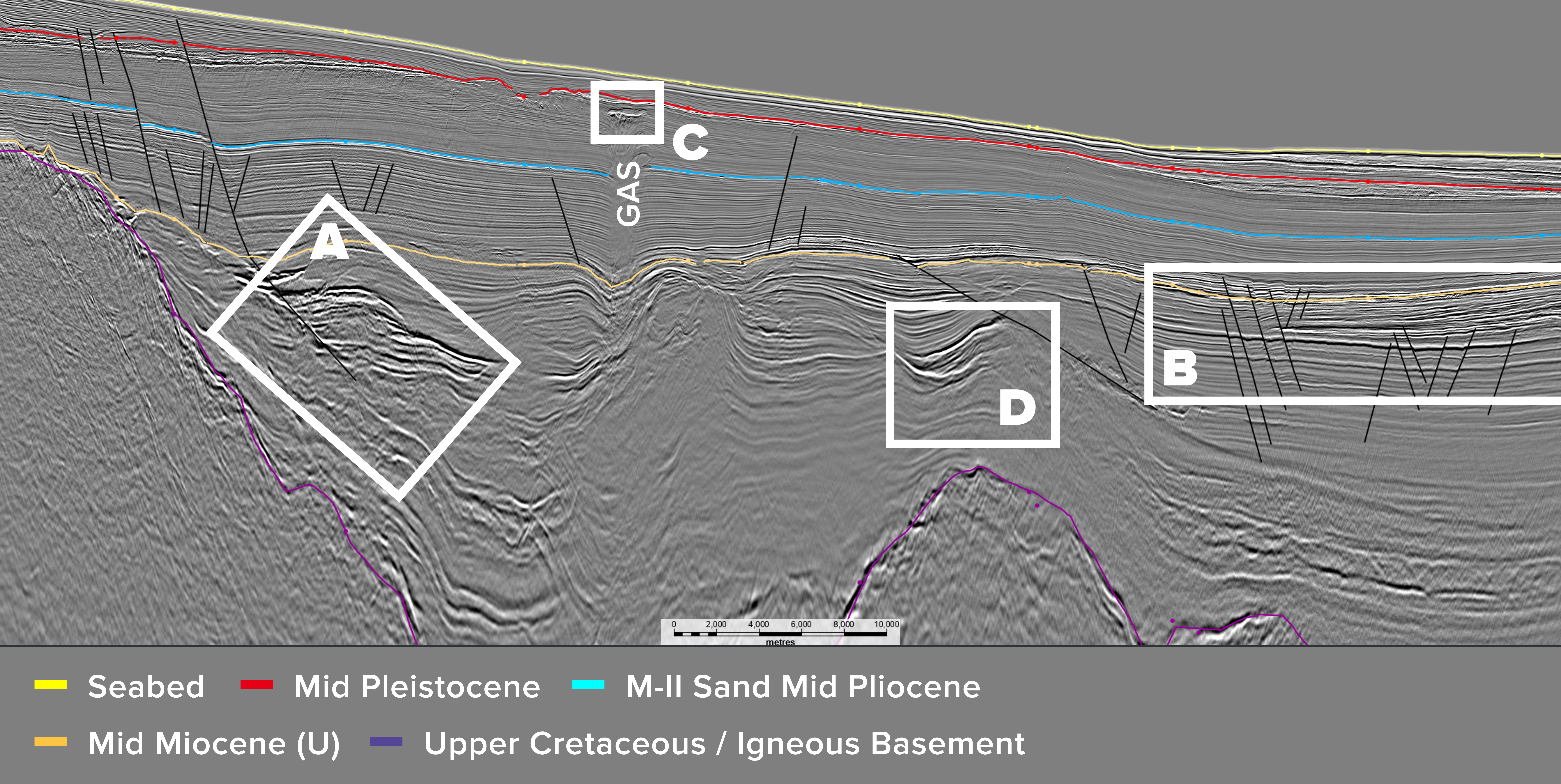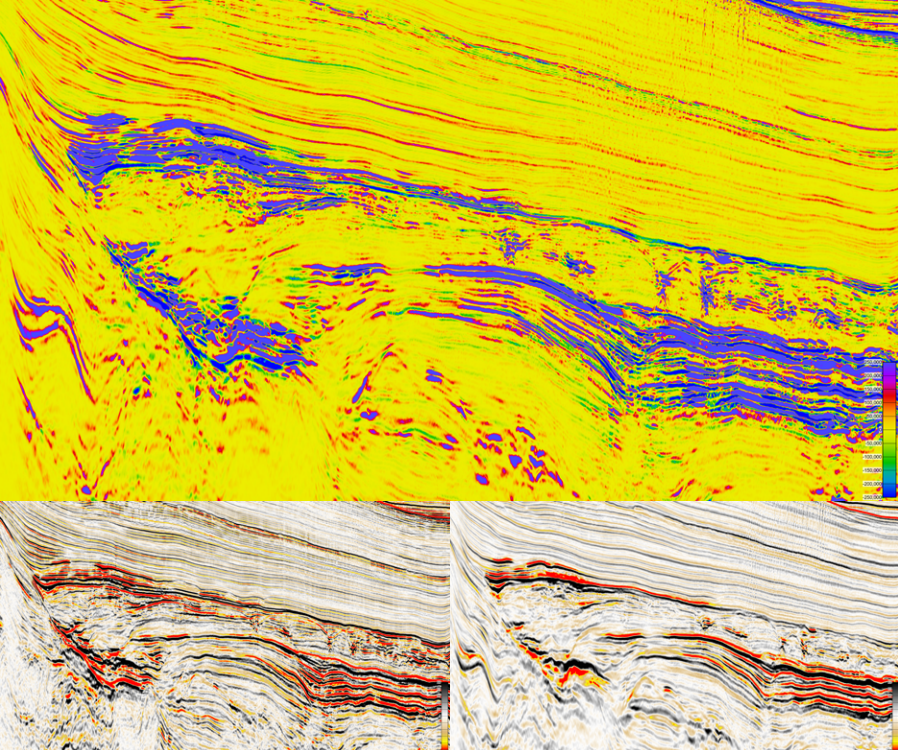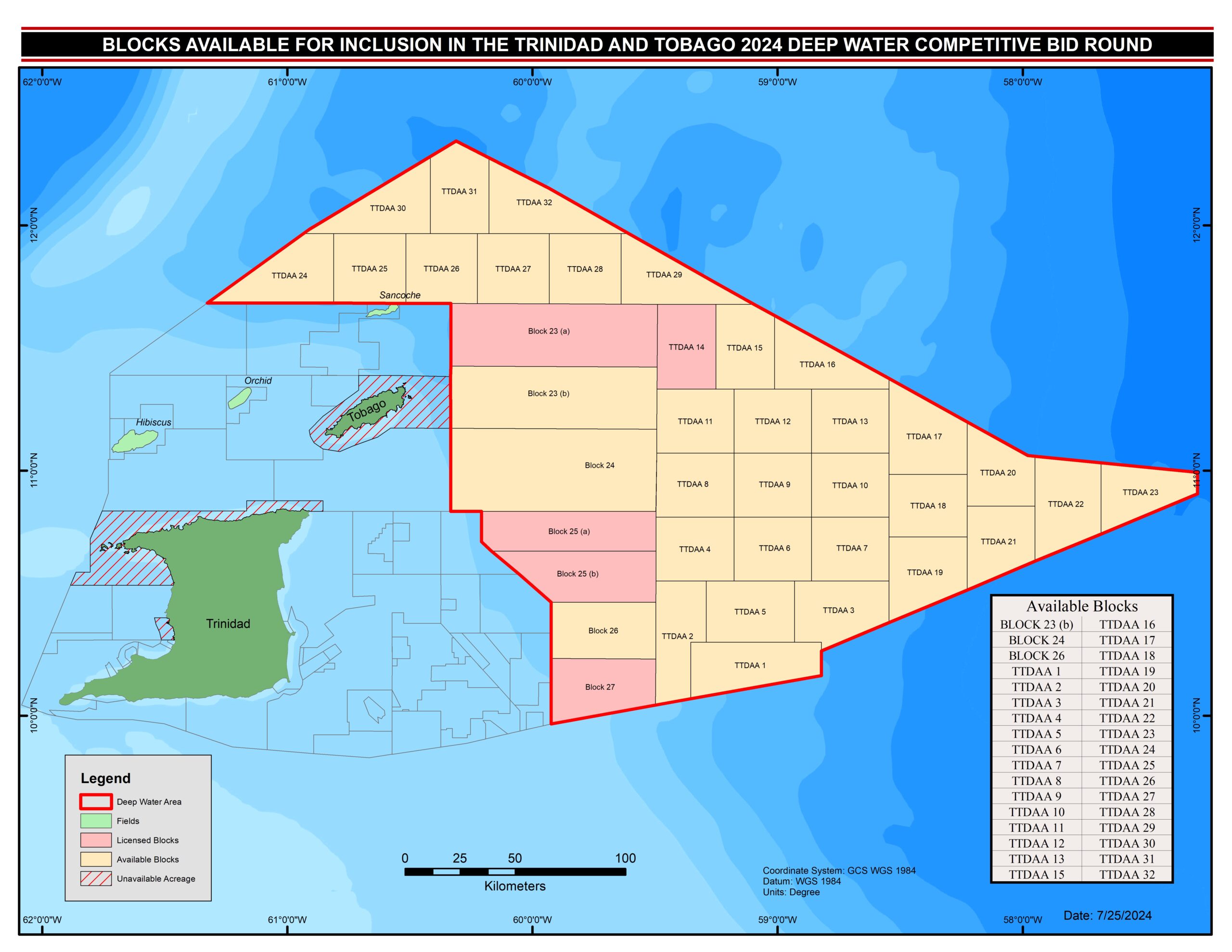Trinidad and Tobago: A vital 2024 deepwater frontier
The Caribbean Atlantic Margin Deep Imaging seismic survey (CAMDI) spans 16,348 km with long offsets (12 km) and a deep record length (18 seconds). This transnational survey covers acreage across the maritime borders of Barbados, Trinidad & Tobago (T&T), Grenada, and St. Vincent.
CAMDI’s regional grid provides a better understanding of the tectonic framework of the different basins along the Southeastern Caribbean and Western Atlantic Margin of Northeast South America. The detailed grid over Trinidad & Tobago and Grenada is designed to provide more localized detail to aid in the identification of oil and gas prospects while tying the producing areas of T&T to the underexplored deeper part of the Tobago Trough.
Approximately 3,315 km of the CAMDI survey are located offshore Trinidad & Tobago, covering shallow and deep-water blocks.

Preferential setting for hydrocarbon accumulations
The CAMDI MC2D survey is situated in close proximity to the producing areas of the Orinoco Delta and Northern T&T. The tectonic history of the region has afforded a preferential setting for hydrocarbon accumulations.
Tectonics offshore T&T were significantly influenced by the North / South American tectonic plates and their interaction with the Caribbean plate. During the late Jurassic to Early Cretaceous, significant rifting occurred between North and South America. Following this rifting, the Caribbean plate migrated eastward from the Late Cretaceous onwards, relative to the North and South American plates to its present-day position. The complex structural setting, geometries and subsidence mechanisms of the basins located in this area are controlled by several fault systems, that resulted from major tectonic events in the southeastern Caribbean as result of this migration.
The CAMDI survey area in Trinidad and Tobago remains largely unexplored, yet several biogenic gas fields, such as Hibiscus, Sancoche, and Orchid, have been discovered nearby. The producing intervals are Miocene and Pliocene aged turbiditic and deltaic sands, deposited during the progressive easterly progradation of the Orinoco Delta Structural trapping is crucial in this region, as reservoirs are often found against faulted structures and within turbidites.
Evidenced equivalent of La Luna Formation
While most target intervals and discoveries are located in Pliocene intervals, The CAMDI MC2D survey shows a regional distribution of multiple, structural traps and potentially high-quality sheet turbidite reservoirs. Overlying hemipelagic marine clays would form the sealing facies with migration into the reservoirs (Miocene – Eocene) occurring along a combination of thrust and transtension strike slip faults associated with the deformation front (Figure 1).

All the essential hydrocarbon elements for a functioning petroleum system are present in the region. Distal DSDP and ODP wells offshore Venezuela and Barbados have provided evidence of a regional Upper Cretaceous source rock equivalent to Venezuela’s La Luna Formation. Maturation is predicted to have commenced during the Miocene in the Eastern Venezuelan Basin and continued from the late Miocene to recent times offshore Trinidad. Onshore in Barbados, the Woodbourne oilfield produces oil and gas from the Eocene Scotland Group, sourced from a La Luna age-equivalent source rock. While this oil play with further reservoir-seal pairs provided by the Plio–Pleistocene deep marine pelagic sediments remains unproven due to the lack of well penetrations in the Tobago Trough, the CAMDI MC2D survey reveals a distinctive regional high amplitude horizon that could represent the Top Cretaceous Mejillones Complex (Figure 1).
Distinctive AVO responses
Evaluating amplitude differences between the offset stacks using common AVO techniques such as the Enhanced Restricted Gradient (ERG) inferences can be made regarding the hydrocarbon content of the reservoirs as well as locations of oil / water contacts. The ERG provides an initial interpretation of the likelihood of AVO effects and therefore the presence of hydrocarbons within a reservoir by highlighting areas where an AVO response of type II, IIp or type III is present. These response types are defined by their negative amplitude with offset features which often indicate hydrocarbons within the reservoir. CAMDI shows several areas highlighted by the ERG, such as the one shown in Figure 2.

Deepwater competitive bid round
Trinidad and Tobago (T&T), a twin island republic located in the southernmost part of the Caribbean, has a long history in the energy industry, having been involved in hydrocarbon exploration for more than 150 years, with commercial crude oil production beginning in 1902. T&T plays a pivotal role in discovering untapped oil and gas resources, which can bolster energy security and support economic growth, and has produced over 3 billion barrels of oil to date, with natural gas production remaining stable, averaging 2.448 billion ft3 per day over the period January to June 2024.
T&T has significant oil and gas infrastructure and with the discovery of the deepwater Calypso development fields off the east coast of T&T, consisting of Bongos, Bele, Tuk, Hi-hat and Boom, there is an expected peak rate of production of 800 million ft3 of gas per day from these fields.
T&T remains an oil and gas province, with proven petroleum systems, high in prospectivity and unlocked potential. With the global demand for energy continuing to rise, there is a need to ensure a stable and reliable supply of traditional hydrocarbons during this transitional period.

Announcement
The Ministry of Energy and Energy Industries of Trinidad and Tobago will launch its 2024 Deepwater Competitive Bid Round by the end of 2024 and it is expected to remain open for a period of six months. All of the open deepwater blocks, as identified in the map in Figure 3, will be considered for possible inclusion in the bid round. The bids received will be evaluated by a Technical Evaluation Committee, after which successful bidders and the award of blocks will be announced; this evaluation process is expected to be completed within four months.
Fiscal and technical terms
The Government of Trinidad and Tobago has a series of attractive fiscal and technical terms to excite participation in its bid rounds, such as:
- An exploration period of 9 years;
- Fiscal terms, such as 12.5 % royalty to be paid by the Minister, adjustment of price classes and production tiers based on the current economic climate, cost recovery up to 80 % etc.
The Ministry is currently reviewing these and other fiscal and technical terms to determine their inclusion in the 2024 Deep Water Competitive Bid Round, such as the facilitation of Multi-Client acquisition and / or data licensing to fulfill work commitments.




